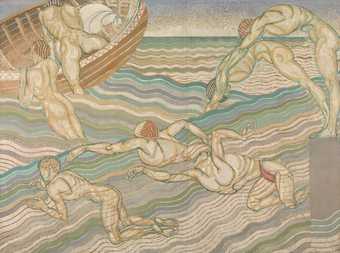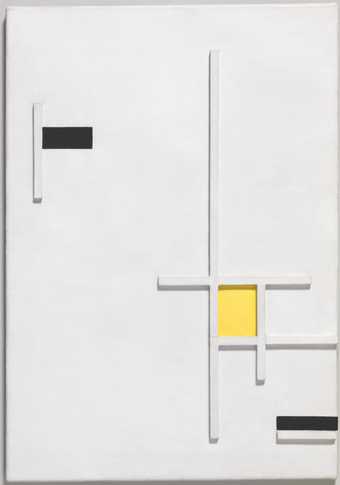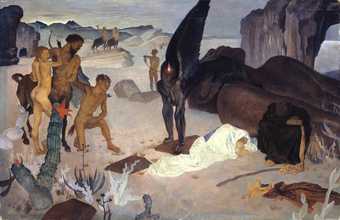Bathing once formed part of a decorative scheme completed by six artists for a student dining hall at Borough Polytechnic, London. The overall theme was ‘London on holiday’. Duncan Grant produced two of the seven murals and, while his colleagues all celebrated family-centred activities, his designs focus on athletic male bodies. In his piece Football, he clearly enjoyed imagining skintight outfits to hug every bulging contour of his players. In Bathing, the clothes come off.
Nude outdoor bathing is now a Hollywood cliché for adolescent rebellion, but it was standard for men until the nineteenth century and survived well into the next. It inspired countless softly homoerotic scenes painted near the turn of the century across Europe and America. Hyde Park’s Serpentine, the setting here, was a men-only swimming spot until the 1930s and nude bathing was still common then. Naked men brought admirers. The Serpentine was on the unofficial gay sightseeing list, even if park regulations attempted to bar voyeurs from the lido.
Adept at picking up male lovers, Grant understood the gay viewpoint he was implicitly presenting. He underlines his message with a set of poses that are almost scandalously suggestive. (Imagine the water gone for a moment!) Perhaps it’s no surprise that one Edwardian hack, writing in the National Review, condemned the corrupting influence the dining hall murals would have on young students.
This text is an extract from A Queer Little History of Art, written by Alex Pilcher.





